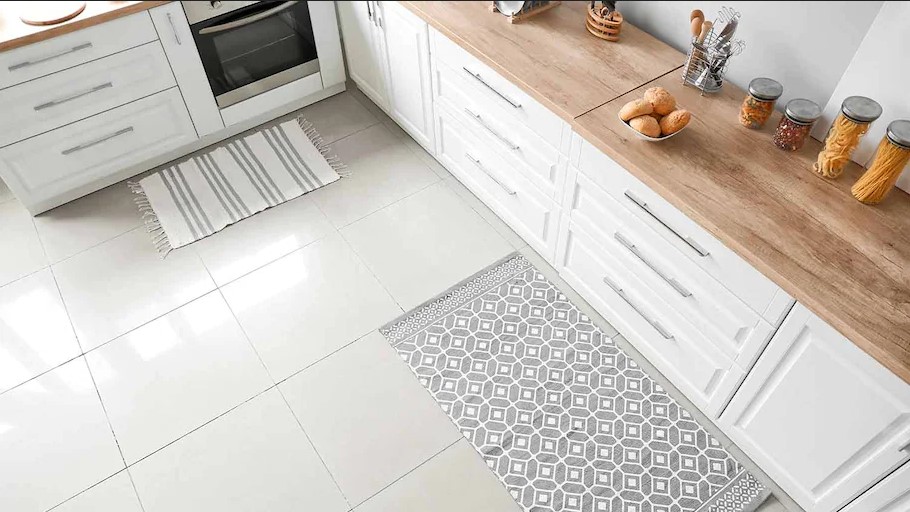
Tile floors are undeniably beautiful and long-lasting. They require little upkeep, are simple to clean, and look great in any room. However, there will come a time when your floors will appear discolored, and the grout will begin to brown. When this happens, it may be time to consider restoring your floor.
Water Damage
The first step in tile flooring restoration is stopping the leak. The next step is repairing the subfloor, which water has compromised. It may be swollen, warped, or soft to the touch. Depending on the extent of water damage, this may require replacing the subfloor.
Water damage can be minor or severe, but in any case, it is destructive. Fortunately, tile flooring restoration Long Island City, NY will require less time, money, and effort than replacing it. But, unfortunately, water damage can also lead to mold growth, complicating your repairs and may even jeopardize your health.
Mold Growth
If you’ve noticed mold growth on your tile flooring, you may need tile flooring restoration. Mold thrives in moist, warm environments. It can easily form behind shower tiles, where the daily steam can create a breeding ground for mold spores. It can also grow on poorly laid flooring. Mold can be dangerous, especially to people who have respiratory problems or allergies.
To get rid of mold, you should try to remove as much of it as possible. If you have a small area, you can try to remove additional flooring, so the mold doesn’t cover the whole floor. If the mold has spread to larger areas, you may have to remove the entire floor. Start at the room’s edges and pry the hardwood boards or carpet padding to expose the affected area. Then, make a series of long cuts across the floor.
Discoloration
Discoloration on tile floors can signify that the floor needs tile flooring restoration. If you notice discoloration on your floor tiles, you may want to clean them using a solution of one-part bleach and two parts water. First, dip a soft-bristled brush into the solution and scrub away the discoloration. Then, apply a marble cleaner to bring back the shine. During this process, you should wear rubber gloves.
Discoloration in hardwood floors is another common sign that your floor needs restoration. This kind of discoloration can ruin the interior design of your home. A thorough cleaning may be able to restore a slightly discolored wood floor, but if it’s heavily discolored or has splintered, you may need to replace the flooring.
Cracks in the Tile
A crack in tile flooring can mean some different things. The damage might be minor, such as grout coming loose, or it could result from a larger problem involving the home’s foundation. In some cases, a tile floor can be repaired. However, in other cases, it may be necessary to have a new floor installed.
Cracks in tile flooring can be caused by a heavy object dropping on it, or they may develop due to foot traffic. Cracks in tile may also be caused by inferior-quality tile. Therefore, you should always seek the advice of a professional if you notice a crack in your tile flooring.
Subfloor Damage
If you notice a problem with the subfloor underneath your tile flooring, you may need to have it repaired. This damage can be caused by different factors, such as a leaky toilet. If the leak is slow, it can spread throughout the walls and floors before the homeowner notices it. In addition, damaged toilets can lead to other subfloor problems, especially in zones close to the main door.
Subfloor damage is difficult to detect unless it’s extensive. The good news is that the damage can be easily repaired if you identify the area. First, you should measure the floor area to find the exact size of the subfloor you need to replace. Then, you can mark the area with a straight edge or chalk line and cut out a new subfloor. Be careful to cut carefully so you don’t damage the floor joists.
Cost of Repair
Restoring tile flooring is a great way to add durability and aesthetic value to your home. It also restores the shiny finish of your tile and makes it look brand new. Tile flooring comes in many colors, shapes, and patterns and can bring a room’s style and character to life. The restoration process not only fixes these imperfections but also toughens the material, making it durable and resilient for years to come.
The average cost of tile flooring restoration is about $10 to $15 per square foot. This price includes basic labor such as planning and equipment acquisition, area preparation and setup, materials acquisition, and tile installation. Related materials and supplies may also be needed, including polishing and fabrication disposables. Tilers may also need to rent specialty equipment, such as stone saws.
